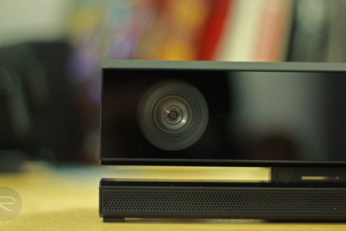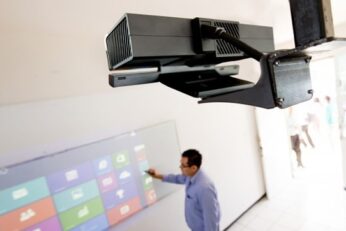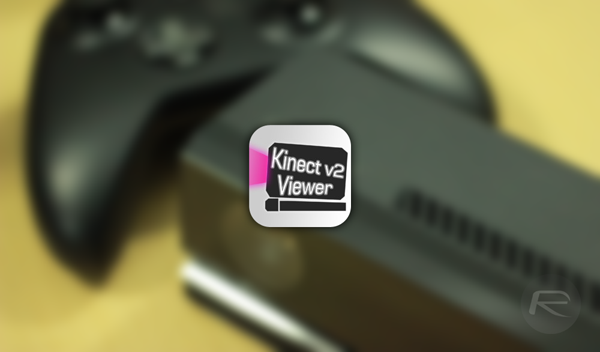Another nail has been hammered into Kinect's coffin, with Microsoft confirming that it no longer makes the Kinect Adapter, the hardware needed to plug a Kinect into an Xbox One S, Xbox One X or a Windows 10 PC.
Windows users can now use their Kinect sensor for Xbox One with their PC thanks to an official adapter kit which Microsoft has just launched. The $49.99 adapter will make the Xbox One version of Kinect not only compatible with just PCs, but tablets as well, as long as they're running Windows 8 or later.
Rumors have been floating around for months, and Apple has now confirmed what was already pretty much a certainty - Apple has bought PrimeSense, the company behind the motion and depth detection technology that made the Xbox 360's Kinect accessory possible. It's worth nothing though that the recently released Xbox One's Kinect is based on Microsoft's own in-house cameras and software, rather than something built by PrimeSense.
The Xbox One has finally arrived today, one week later than its closest rival in the PlayStation 4, and save one or two seemingly isolated incidents pertaining dodgy disc drives, the launch seems to have been relatively smooth and dare we say incident free. One of the main attractions of the new console, besides the fact that it is considerably more powerful and plays a much better game than the Xbox 360, is the second-gen Kinect sensor, which has improved in many ways since the original launched back in 2010. Many of you who've gone to pick up the Xbox One will be getting to grips with some of its new and exciting features, but what won't be shipping is the handy cheat sheet posted online, detailing many voice commands and gestures that Microsoft has neglected to include with the in-the-box literature.
As well as delivering plenty of insight into its upcoming Xbox One console along with some of the many launch titles set to be available when the November release date arrives, Microsoft has been doing a pretty stellar job of talking up the next-gen Kinect, which will ship with each and every newly-purchased Xbox One. We've already seen some of the many powerful features on offer with the new device, including the ability to recognize two different voices when they're talking at the same time, and and an intriguing new video clip offers perhaps the most vicarious look yet through the eye of the sensor.
Microsoft's original Kinect sensor was extremely popular when launched back in 2010, and as we draw ever closer to the release of the Xbox One, we're looking forward to seeing what the next-gen Kinect is made of. Microsoft has waxed lyrical about it and its various new capabilities for quite some time, but while we might have thought we knew the new motion sensor inside out, the Redmond company has dropped a little more interesting information. Talking at the London Eurogamer Expo, Microsoft's Phil Harrison spoke of how the new Kinect will include the ability to understand two people talking at the same time, which take things quite a bit further than we've ever seen in the gaming world.
Every once in a while, there comes a new idea that truly makes consumers go crazy over the product that has been delivered (or proposed, for that matter). Ubi Interactive, a company that has no link whatsoever to Ubisoft, by the way, has come up with the new application that works in conjunction with Microsoft’s Kinect for Xbox, and has the ability to convert any flat surface into a virtual “touch-screen” that works with a projector.
Since announcing the Xbox One, Microsoft has been doing quite a lot of back-tracking, and as well as rethinking its Xbox One used games policies and DRM, the company has now stepped out and admitted that in actual fact, the Kinect sensor is not required in order for the console to function. Hitherto, Microsoft has said that the bundled second-gen motion sensing peripheral would need to be connected for the purpose of the console's operation, but while that may be true of certain features, it's not essential for all tasks.
When the Kinect SDK first launched, researchers began looking into ways to make the technology more accurate, allowing it to do much more than tracking bodily movements. Although such advancements have yet to manifest in the popular peripheral, Microsoft has today showcased a feature allowing for the fine-tuning of gesture control, allowing the Redmond company's Research team to simulate multitouch gestures on a PC, but over the air.
The highly-anticipated launch of the PlayStation 4 is almost upon us, but it serves as just a mere chapter in what promises to be an explosive battle between the major next-gen consoles this year. Also purported for announcement at some point in 2013 is the successor to the Xbox 360, and although much of the rumor and speculation thus far has encircled the console itself, the changes made to the current Kinect peripheral will also be important in determining the overall success of the console, dubbed the 'Xbox 720'. VGleaks, a site which always seems to have the scoop on forthcoming console info, has delivered once more with a detailed list of what it purports to be the specs of the so-called Kinect 2.0.




